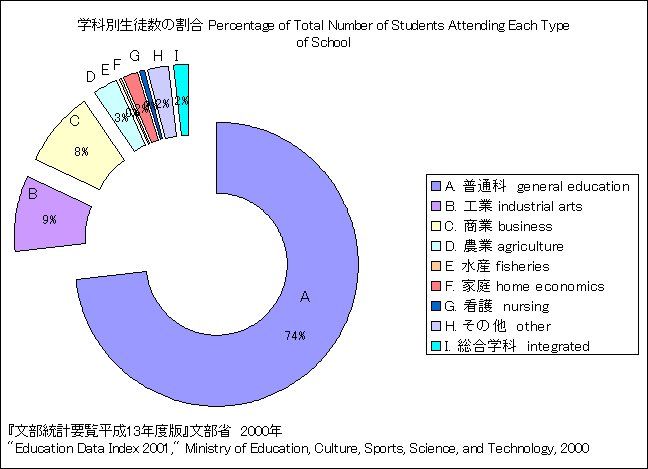Futsu-ka (general education program), senmon gakka (specialized or vocational progams), sogo gakka (integrated programs)
普通科、専門学科、総合学科高校
ふつうか、せんもんがっか、そうごうがっか こうこう
Of the students attending high school, most (73.3% in 2000) enroll in general education programs (futsu-ka) centering around Japanese language and literature (kokugo), English, and mathematics. There are also specialized or vocationally oriented courses (senmon gakka) in such fields as industrial arts (kogyo), business (shogyo), agriculture (nogyo), home economics (katei), or fisheries (suisan). Since 1994, some schools have what is called an "integrated course" (sogo gakka) aimed at helping students specialize in preparation for a future career. Integrated program students are free to select subjects from a wide variety of courses from both general education subjects and specialized fields. The integrated program is the attempt to respond to the disparate aptitudes and interests of individual students. In this progam, 35 of the 80 credits (from 2003 74 credits) necessary for graduation must be in required basic subjects such as Japanese language/literature, and mathematics, but the remainder can be in elective courses, such as arts or information science, chosen according to the student's individual interests or abilities. One of the required courses is called "human beings in the industrial society" (Sangyo shakai to ningen). In 2000 there were 141 high schools offering an integrated program of study.
《→Shibecha Koko; Shibecha High School》

|

sm_d07 |

sm_d08 |
|